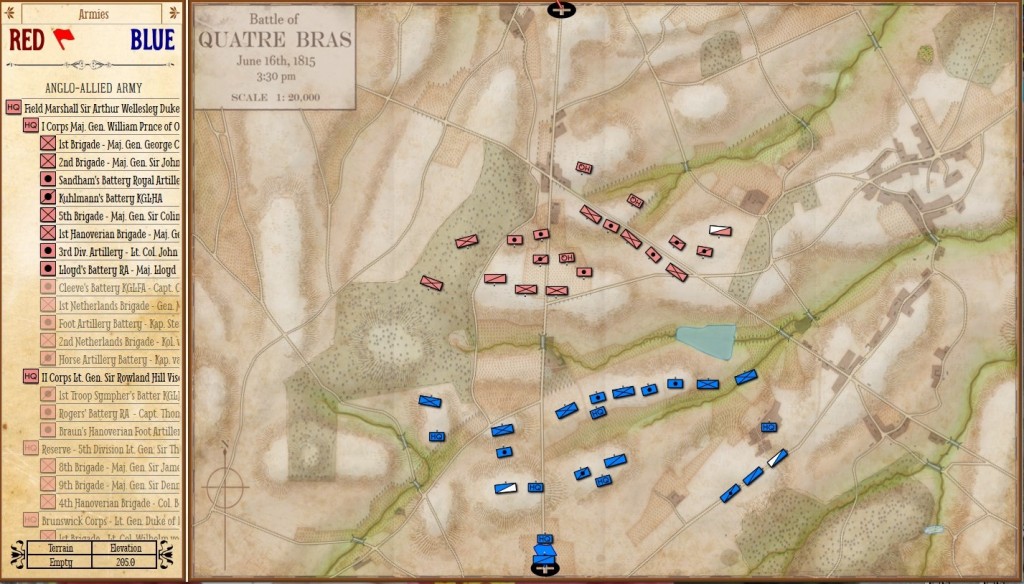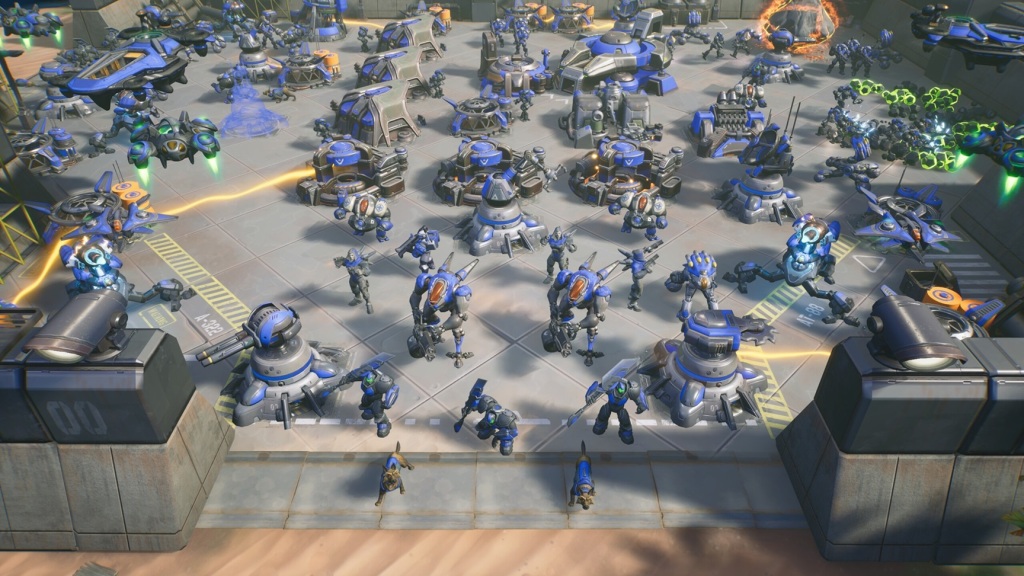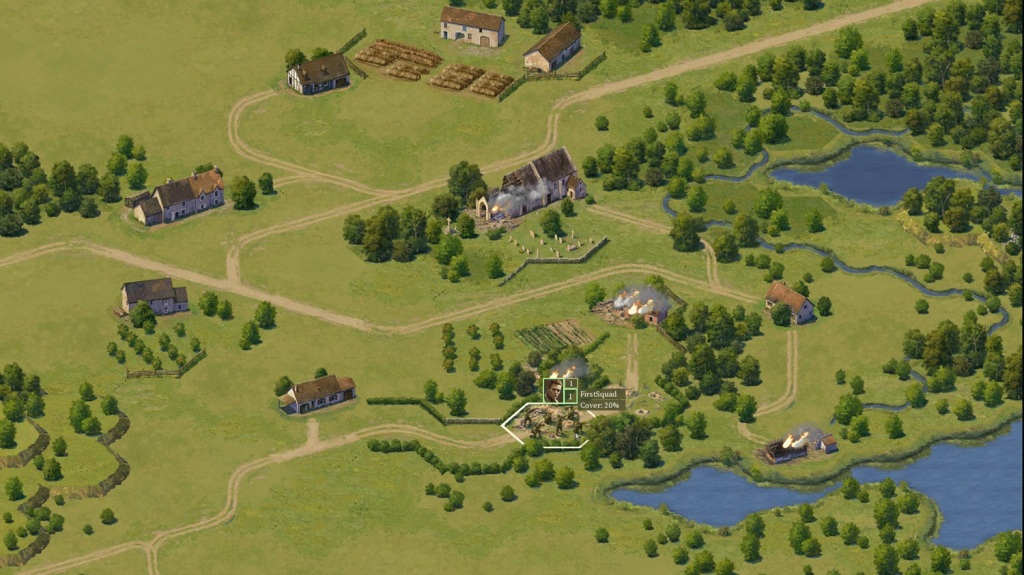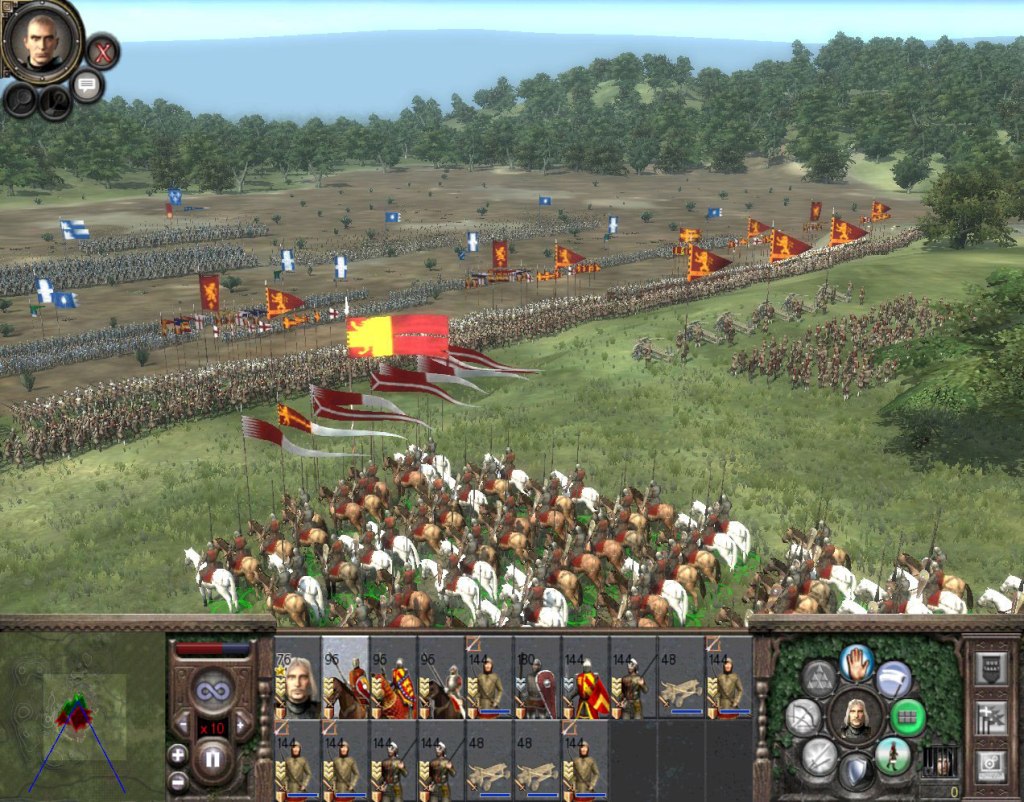This interview was supposed to go online only on Friday, but due to the number of things I’m going to have to write the following couple of days, this is as good time as any to release it into the wild. In all honesty, anything D. Ezra Sidran has to say is worth reading, no matter the time, or the day. I would love to thank D. Ezra once again for the time he spent answering my questions when he could have been doing a lot of other, more interesting things, like working in his up-and-coming masterpiece, General Staff: Black Powder.
Who is Dr. Ezra Sidran and how did he come to be one of wargaming’s most recognizable names?
I am a computer scientist who designs and creates computer wargames. I began playing board wargames (like those produced by Avalon Hill) in the 1960s. The problem then was finding opponents. In the 1970s I saw the very first computer-generated wireframe 3D images and I thought this technique could be used to represent battlefields in 3D. By the 1980s home computers had become fast enough and had enough RAM to do simple 3D wireframe and I decided to create the first 3D computer wargame, UMS: The Universal Military Simulator.
I followed UMS up with a number of other commercial computer wargames including, UMS II: Nations at War and The War College.
The wargames that I have created are known for a number of things:
- Extremely in-depth simulation
- Ability for the user to adjust variables and values
- Not using hexagons because they distort actual distances and movement
- Advanced artificial intelligence
I’ve also been a Research Scientist and Principal Investigator for DARPA (Defense Advanced Research Project Agency) working on wargames and tactical AI. I have also worked on wargames and other projects for the United States Army and the Office of Naval Research.
I have published numerous papers on AI for wargaming and my doctoral thesis, TIGER: An Unsupervised Machine Learning Tactical Inference Generator, has been downloaded hundreds of times (link). This thesis, to the best of my knowledge, is the only published work on machine learning and wargaming AI.
I know you worked on UMS, a game that was released a couple of years before I was even born! What was UMS and what made it so popular back then?
UMS sold over 125,000 units. That has to be a first for a computer wargame. Even though it was published in 1987 it was hardly the first computer wargame, though. Most were ports of board games and they used hexagons. Others, like Sid Meier and Ed Bever’s Crusade in Europe, Decision in the Desert and NATO Commander (these were all published by MicroProse), were original wargames created for the computer. But, yes, UMS was a #1 game in the U. S. and Europe.
I think one of the reasons that it was so successful is that it allowed the user to create their own armies, 3D maps, and scenarios. You could make anything you wanted. I’ve even seen scenarios that people created of Lord of the Rings battles.
UMS was a simulator. I’ve always tried to create very detailed military simulations that allow the user to make their own scenarios.
How would you characterize the wargaming and strategy gaming scene in this day and age? How far have we come since the days of board games and how do you foresee the near future?
There are two sides to the wargaming world: ‘commercial’ which are wargames created and sold to the home market and ‘professional’ which are used by the world’s military. Around the year 2000, I stopped working on the commercial side and started consulting on professional wargames for the US Army, Air Force, and eventually DARPA, so my perspective has changed.
There are two major differences between commercial and professional wargames: budget and AI.
The budgets for commercial wargames range from a high of a couple of million (I’m just guessing that’s the budget for a Total War game) to a low of zero (that is to say, they’re produced a small band of dedicated coders, artists and designers without support from a publisher). The budget for a professional wargame (and I know this for a fact) is around $1.4 billion. That was the actual cost for the OneSAF (One Semi Automated Forces) wargame the US Army uses.
And, here’s the other big secret: professional wargames do not have any AI. That’s right. The ‘semi automated’ part of OneSAF are these guys:
These are ‘pucksters’; people behind the scenes making the moves for the enemy (OPFOR).
So any commercial wargame that you play probably has better AI than the $1.4 billion wargame the pros use.
So, that said, there are only three ways for wargames to improve:
- Greater accuracy of the simulation
- Improvements in the AI
- Gameplay
The mechanics of modeling ‘force on force’ simulations are pretty well understood. I would argue that most simulations are fairly accurate at this point.
Gameplay is just making the wargame more fun and engaging to play. The Total War series has great gameplay (not such great AI, sadly). I’ve done some new things in General Staff which I hope will greatly improve gameplay.
But, wargame AI is extremely complicated and there are no simple solutions. Many (most) commercial computer wargames simulate only one particular battle and this allows for ‘hardwiring’ some simple AI routines that are specific for that battle only. If you are writing AI routines for the Union forces at the battle of Gettysburg, for example, you know in advance that you have to occupy Cemetery Ridge, Cemetery Hill, Culp’s Hill, and Little Round Top; these geographic features are the keys to the Union defensive line. But, if you’re writing AI that has to analyze and make decisions on a battlefield that has no advanced knowledge of, that is a much more complex problem. To write that kind of AI, the AI must ‘understand’ basic military concepts and implement them with the forces at its disposal. Also, I believe that machine learning – techniques where the software ‘teaches’ itself – is the future of wargaming AI.
General Staff looks fantastic but I’ve got to ask, what is it?
General Staff: Black Powder is a complete military ‘sandbox’ that allows the user to recreate any battle during the 17th – 19th centuries. It comes complete with an Army Editor, Map Editor, Scenario Editor, and the actual game itself (which runs in either ‘Game’ or ‘Simulation’ mode). General Staff: Black Powder can also be run in a Victorian graphic style or a modern style:
General Staff in Simulation mode uses levels of command and orders transmitted via couriers (Game mode is an introductory level). General Staff will be implementing my wargame AI research over the last thirty years. We believe that General Staff: Black Powder will be the definitive engine for 17th – 19th century wargames.
Now, you’re known for your AI work, so let’s say I just booted General Staff, what’s the likelihood of its AI taking over my computer and eventually destroying its flesh and bones overlords? (https://www.general-staff.com/why-machines-may-kill-us-in-our-sleep/) In all seriousness, what makes General Staff AI different from all other games out there?
This is a part of the AI’s analysis for Blue forces at Quatre Bras:
So, you can see that the AI ‘understands’ basic military concepts like ‘unanchored flanks’ weak points, chokepoints and makes decisions based on this understanding. I think this is unique.
If you’re a game developer and would like to give an interview, get in contact with me at strategyandwargaming@gmail.com
Follow Strategy and Wargaming Socials
Strategy and Wargaming needs you to follow its socials. Are we the best strategy gaming website around? I would say so. Heck, what other options do you have? The Wargamer? Please.
So why not give us a follow on the cesspool that is Twitter, or join the 1000 other geriatric patients on Facebook? Or subscribe down below? Or maybe do everything? I don’t care, I’m not your grandmother.
If you enjoyed the article, consider buying me a coffee!
I’ve been running Strategy and Wargaming at my own expense since 2017, with only the ad revenue to cover the hosting, with everything else being done by me. So, if you’re an avid reader, you can afford it, and want to support the website, please consider Buying Me a Coffee by clicking this link, for as low as one euro! If you do, just know that you’re helping out a lot and contributing so that Strategy and Wargaming can continue growing!























Leave a comment